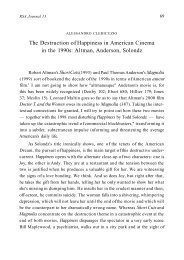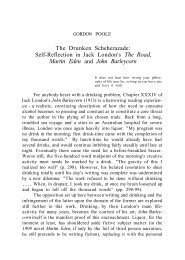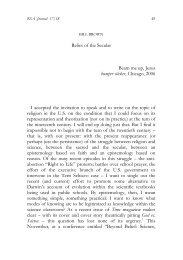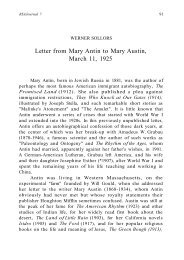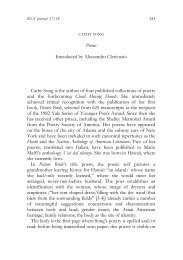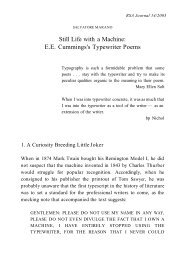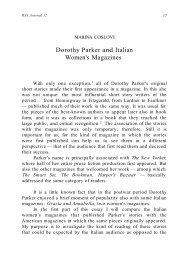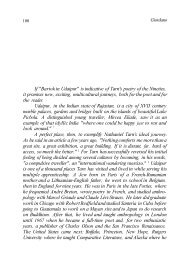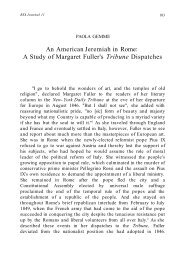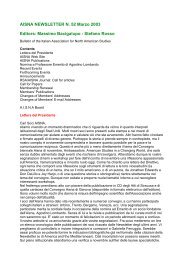Myth and Carnival in Robert Coover's The Public Burning - aisna
Myth and Carnival in Robert Coover's The Public Burning - aisna
Myth and Carnival in Robert Coover's The Public Burning - aisna
- No tags were found...
You also want an ePaper? Increase the reach of your titles
YUMPU automatically turns print PDFs into web optimized ePapers that Google loves.
RSA Journal 311matter, <strong>The</strong> New York Times with its journalistic mythopoiesis. Ascreator of "newly fleshed" realities, journalism has a div<strong>in</strong>e role <strong>in</strong>modern society, <strong>and</strong> provides a theology which is susta<strong>in</strong>ed by faith <strong>and</strong>belief. Marc Chénetier argues that <strong>in</strong> <strong>The</strong> <strong>Public</strong> Burn<strong>in</strong>gla presse, que l'on suppose être le degré zéro de 1'Histoire, n' est en faitque le stade premier de l'élaboration des rêves, qu' elle communique à seslecteursl'idée première qu'il existe une transcendence à l'événement,que 1'on peut ériger l'anamnese sautillante en parcours objectif. Toutlien établi par l'oeil entre deux colonnes du journal, vois<strong>in</strong>es ou non,postule Dieu. (Chénetier 1979, 232)It postulates, <strong>in</strong> other words, a transcendental theology, the biblicalapocalypse that reunites chaos <strong>and</strong> confusion <strong>in</strong>to a comprehensive <strong>and</strong>common telos; it presupposes, also, the <strong>in</strong>cipit of the gospel accord<strong>in</strong>g toJohn—"In the beg<strong>in</strong>n<strong>in</strong>g was the Word," a div<strong>in</strong>e epiphany of thelogos:noth<strong>in</strong>g liv<strong>in</strong>g ever appears here at all, only presumptions, newly fleshedout from day to day, keep<strong>in</strong>g <strong>in</strong>tact that vast, <strong>in</strong>tricate, yet statictableau—<strong>The</strong> New York Times's f<strong>in</strong>est creation—with<strong>in</strong> which a reasonable<strong>and</strong> orderly picture of reality can unfold. No matter how crazy it is.(PB 192)A heuristic of reality co<strong>in</strong>cides for Coover with a heuristic ofpower: if reality is the result of a fictional construct—"No matter howcrazy it is"—power is the ability, on the part of a political establishment,to stop the proliferation of reality-construction <strong>in</strong>to a "statictableau." In this sense, one of the most overwhelm<strong>in</strong>g manifestationsof power is the construction of historical "truths" as dogmaticexplanations <strong>and</strong> legitimations of a political status quo. Written dur<strong>in</strong>gthe period <strong>in</strong> which Coover was still work<strong>in</strong>g on <strong>The</strong> <strong>Public</strong> Burn<strong>in</strong>g, thenovella Whatever Happened to Gloomy Gus of the Chicago Bears?suggests thatOnly for ... the dogmatist... is there one "history" only. <strong>The</strong> rest of uslive with the suspicion that there are as many histories as there arepeople <strong>and</strong> maybe a few more ... what arrangements can we not imag<strong>in</strong>e?(Coover 1987, 9)



